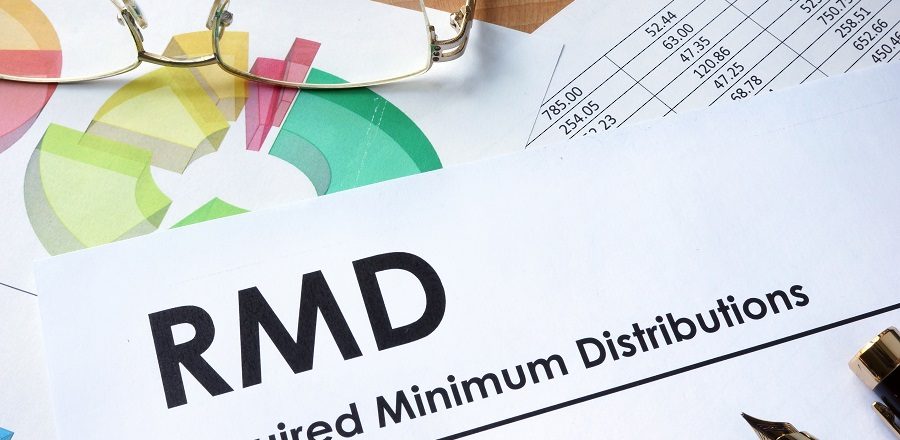Anyone who owns an IRA and is past age 70 ½ knows you have to make minimum withdrawals, known as RMDs (Required Minimum Distributions) each year, whether you want to or not. If you’re in a situation in which you don’t need the distribution for income, it doesn’t matter; you still have to take the distribution. If you don’t take the distribution, you face a stiff penalty of 50 percent on the amount of the RMD not taken. For folks who are fortunate to have large traditional IRAs, this event has the potential to create a rather sizable tax responsibility.
Not many people I know are excited about paying more taxes. So is there a planning technique that may help with reducing the tax bite generated by RMDs? Fortunately, Congress passed a bill in December of 2015 called the Protecting Americans from Tax Hikes Act (PATH) that made permanent a technique known as a Qualified Charitable Distribution (QCD). QCDs were first allowed in 2006, but they were not permanent until the PATH Act of 2015. QCDs will enable you to make a charitable contribution from your traditional IRA and avoid taxes on the distribution, provided there are several rules you follow.
Qualified Charitable Distribution Rules
- You must be at least 70 ½ years old, which is when you are required to start taking RMDs, and the distribution must come from a traditional IRA, not from a SEP or Simple IRA.
- There is a limit of $100,000 per person each year for the QCD. Spouses filing jointly could potentially contribute up to $100,000 each, as long as they both meet all the eligibility rules and each QCD comes from his/her respective IRA’s.
- To qualify as a charitable contribution, the QCD must go to a qualified charity, as described in IRC Section 170(b)(1)(A). You can send the money as a direct transfer from the IRA custodian to the charity, or in the form of a check made payable to the charity. The QCD is not valid if the check is payable to the IRA owner, who then endorses it over to the charity.
- Any QCD must be completed by December 31. If the payment is made out to the charity, then the check should be deposited by December 31st to be considered completed. Therefore, it would be best to start the process of sending the QCD in time, so the charity receives the QCD and deposits it before December 31st.
It is important to note that the first distribution taken from an IRA in the tax year is deemed to go toward satisfying the RMD for the year. For example, if your RMD is $3,500, and you make a regular withdrawal in January of $3,500, then the withdrawal would all be taxable and would be considered to have satisfied your RMD for the year. In this example, if you later make a QCD from your IRA, it would not go toward satisfying your RMD.
Benefits of Qualified Charitable Distributions
- QCDs are not subject to the limitations of the 60/30 rule. In 2018 itemized charitable deductions will be limited to either 60 percent or 30 percent of your Adjusted Gross Income, depending on the type of charity. QCDs are not subject to this limitation.
- While QCDs do not generate any income, they aren’t counted as a charitable deduction either. QCDs are helpful because they reduce the likelihood of going above income thresholds that could push you into higher marginal tax rates. There are a number of different ways reducing overall income may help reduce taxes.
- Having lower combined income may reduce taxes on Social Security benefits. For individuals, if combined income is between $25,000 and $34,000, then you may have to pay income tax on up to 50 percent of your benefits. If combined is over $34,000, then 85 percent of your benefits are taxable. For married couples, the 50 percent taxable threshold is for a combined income of $32,000 up to $44,000, and the 85 percent threshold is for combined income above $44,000.
- Lower income may help reduce Medicare Part B premiums. For example, the Part B premium jumps from $134 to $187.50 per month in 2018 if modified adjusted gross income is above $85,000 for individuals, or $170,000 for married couples. Part B premiums increase even more for higher levels of income.
- Making a QCD may help avoid the 3.8 percent Medicare tax. This tax applies to taxpayers if their net investment income and modified adjusted gross income exceeds $200,000 for individuals or $250,000 for married couples filing jointly. However, this tax only affects about 2 percent of the population.
Conclusion
Because the standard deduction has been increased to $12,000 for single filers, and $24,000 joint filers for 2018, it may be more advantageous to claim your standard deduction instead of itemizing deductions. Charitable deductions comprise part of your itemized deductions, so you wouldn’t get a benefit from regular charitable contributions if you claim the standard deduction. So instead of taking RMDs as ordinary income, you may satisfy the RMD by making a QCD to your favorite charity, even if you claim your standard deduction.
If you are planning to make charitable contributions for 2018, the QCD is a great way to help reduce taxes on your RMDs at the same time.
You should not apply this information to your individual tax situation without consulting with a qualified tax adviser to determine whether this strategy is appropriate for your situation.
Disclosures
The views provided on this website are intended to provide the investor with an introduction to the company and its investment strategies.
Gantt Financial Advisors, LLC is registered in Alabama only. Nothing on this website should be construed as a solicitation or offer, or recommendation, to buy or sell any security, or as an offer to provide advisory services by the company in any jurisdiction in which such solicitation or offer would be unlawful under the securities laws of such jurisdiction. Information on this website is intended only for United States citizens and residents. Nothing contained on this website constitutes investment, legal, tax or other advice, nor should be relied upon in making an investment or other decision. You should obtain relevant and specific professional advice before making any investment decision. A copy of the company’s current written disclosure statement discussing Gantt Financial Advisors, LLC business operations, services, and fees is available from the company upon request.





